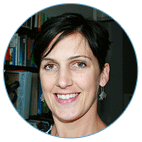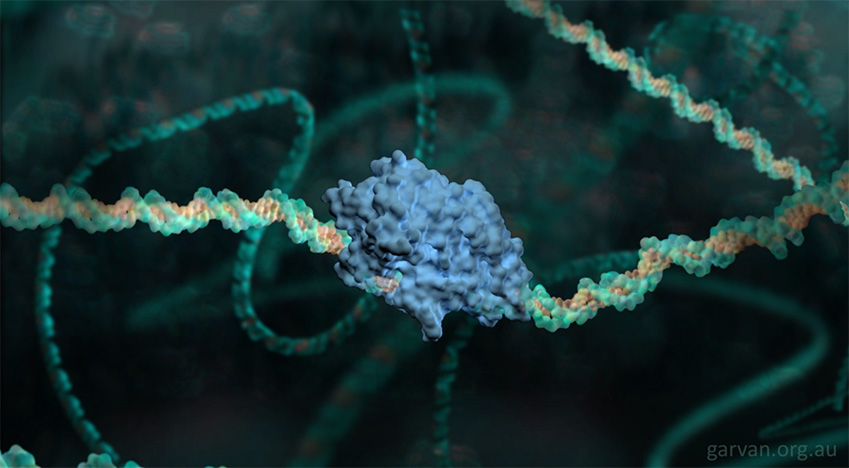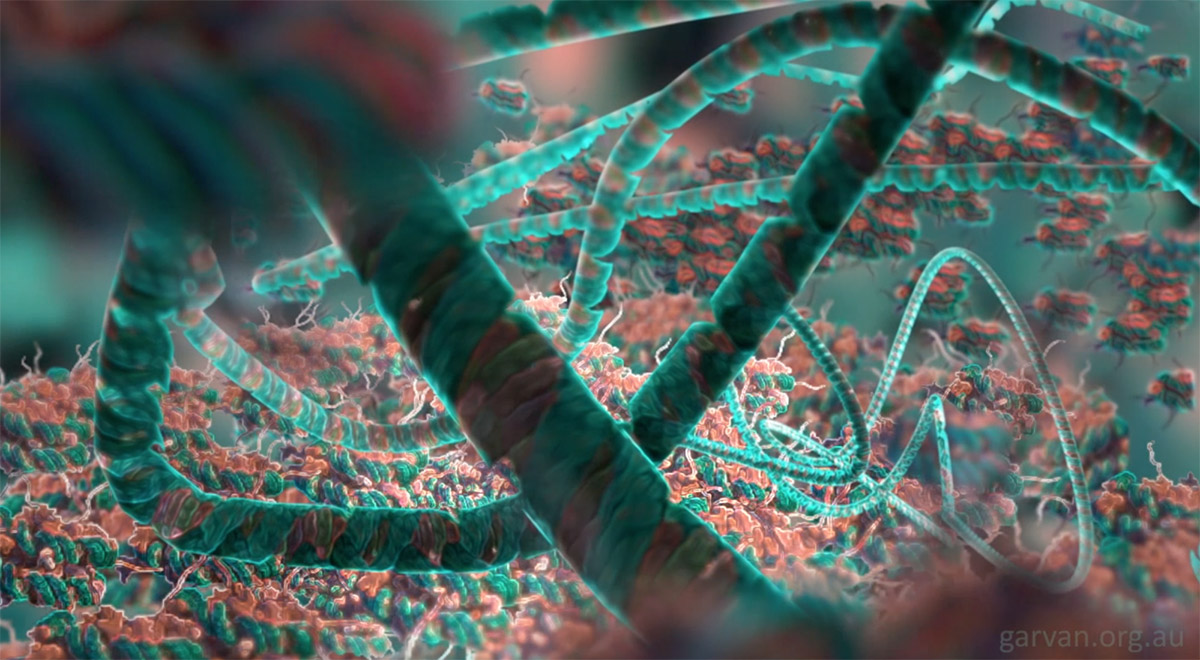
Biomedical Animator
CAREER PROFILE
Please introduce yourself (what is your current training/educational status and/or where do you work?) and share with us how you decided to get into scientific visualization.
I currently am lucky to work both at the Garvan Institute of Medical Research – a not for profit medical research institution in Sydney, Australia and also at The University of NSW Art and Design school in Sydney. My work at the Garvan is as a biomedical animator and visual science communicator and at UNSW Art and Design I teach Fundamentals of Research in Art and Design and also some aspects of 3D animation.
My brief (yet convoluted) entry into the field of visualisation was via a Veterinary Science degree and then a PhD in Cancer Research (human). As a veterinarian I always relied on visuals to communicate with animal owners, but it was during my time as a PhD student that I began to focus on creating visuals for biomedical research. Since 2009 I have worked as a visual science communicator in my freelance business MediPics and Prose and also at the Garvan.
I have recently embarked on a research Masters degree at the UNSW Art and Design looking at biomedical visualisation through the lens of Art and Design.
What do you like the most about this field?
I love the clarity that creating visuals brings to communicating science and the reactions of the audience when they see, interpret, and comprehend scientific visualisations.
How and where did you acquire your current skill set in scientific visualization? Was it all via a graduate or other program or are you self taught? If so, did you use any particular online resources to help with your training?
I am predominantly self taught although I have been lucky to have a great mentor in 3D animation and scientific storytelling in Drew Berry. I have relied on Digital Tutors, Molecular Movies and Gnomon Workshops as online resources.
What do you consider some of the biggest barriers to entering the field? Are they technical, training, scientific, professional (availability of jobs or projects)?
I believe the biggest barrier at this stage is the availability of jobs. The field is still a bit like a choose your own adventure game, and while this is an aspect I thrive on, it is not for everyone.

How do you feel your PhD training has an impact on your scientific visualization work? What specific skills from your PhD training have empowered you in your scientific visualization work? Do you think your PhD training has given you a unique perspective on viewing, interpreting, and creating scientific visualizations?
My PhD training was integral in teaching me how to conduct effective research. This is a skill critical to the visualisation process. From the initial literature review, prototyping, collaboration, revision and dissemination, research training is pivotal in creating an effective visualisation. Also, something that is especially true when working on a larger visualisation project is that the timeframe for conducting research teaches you resilience and perseverance when the road to completion is not clear.
Can you provide a specific example/situation of where you think your PhD training changed the way you designed something, interacted with someone or navigated a situation?
I believe the way I learned to plan my thesis chapters, figures and specific research messages is very similar to the storyboard stage of a biomedical animation. I also have learned to accept that you can not present everything that exists in the literature, and the ‘art’ is knowing what to include and what to exclude in order to make the communication of your work clear and concise.
Which practitioners (or what visualizations) have been most inspirational to you?
Definitely Drew Berry – I have been so fortunate to have had him as a mentor. I also have been greatly influenced by the team at Toronto University and the Biomedical Communication course. The academic rigour and teaching philosophies applied there have greatly influenced my recent return to academia. It is always a challenge to combine practice with research and teaching but this team does it very well. In addition, the way Gael McGill manages to supremely juggle a successful research team and business or commercial team is inspiring.
My two favourite conferences that have shaped my career path are: VIZBI – Visualising the future of biomedicine and the Gordon Research Conference: Visualisation in Science and Education.
If there was one resource, tool or conference that you could wish for to facilitate your work, what would it be?
Definitely a technological advancement so that I can clone myself – this would allow me to work on the various exciting projects that are always running in parallel. I live in a constant state of feeling like I would like to apply more time and creative energy to every one of these projects!
What other advice would you offer those interested in either a professional or full-time academic career in scientific visualization?
Do it. Its SO much fun and so rewarding. My advice would be that if you’re nervous about launching full-on into a biomedical-viz career with formal training, to start working on your personal practice now, in your spare time, and where possible weave it into your current work. It will grow and mature from there.


Please comment briefly on the samples/links that you have submitted for this profile… why in particular are you proud of these and what do you hope viewers will notice and get from seeing them?
These images are from my latest project “Tagging DNA” which is an animation about the players in DNA methylation and the patterns of methylation in cancer. These three screenshots represent areas in the project where the greatest research was needed to either 1) clarify the science or 2) harness the technology to achieve my desired result. I hope to spark interest in the viewer such that they seek more information about what it is they are looking at.
Where do you think the field scientific visualization is ‘going’? Do you perceive any trends in its evolution or are there certain directions that you would like to see implemented?
I believe there is a growing expectation that science and medicine will be communicated with effective visual means. Technology is so embedded in our lives and so accessible that visualisations will be integrated into every-day devices in a way that allows everyone the opportunity to delve deep into our bodies and into biology to learn and understand.
And then lets end with a simple question… What is your ‘10 year plan’ in terms of what you hope to accomplish in scientific visualization?
I will start first with my 10 minute plan… because that seems slightly easier to answer… and that is to FINALLY FINISH rendering the image I am working on!!
In ten years I hope to have made some contributions to new knowledge in research in the area of scientific or medical visualisation. I hope to be active in both research and production, working with a team of people to advance and contribute to this area in highly creative and innovative ways.
Portfolio Link: http://www.medipicsandprose.com.au
